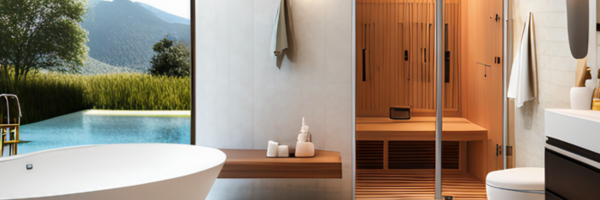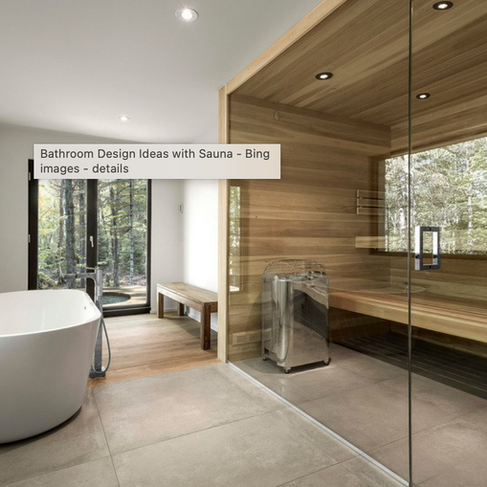Home Saunas: The Hottest Place To Be
- pamelasjacobs
- 7 days ago
- 3 min read
Saunas have long been associated with relaxation and wellness, but now they are becoming a sought-after feature in home design. More homeowners are discovering the benefits of having a personal sauna, turning their master baths and living spaces into private retreats. This trend is reshaping how people think about comfort and health at home.

Why Home Saunas Are Gaining Popularity
The appeal of home saunas goes beyond just luxury. Many people want a way to unwind after a busy day without leaving their house. A sauna offers a quiet, warm space that promotes relaxation and stress relief.
Health benefits also play a role. Research suggests regular sauna use can improve circulation, ease muscle tension, and support skin health. For those with active lifestyles or chronic pain, a sauna can be a valuable addition.
Homeowners also appreciate the convenience. Instead of visiting a gym or spa, they can enjoy sauna sessions anytime. This ease of access encourages more frequent use, which can lead to better results.
Types of Home Saunas to Consider
Choosing the right sauna depends on space, budget, and personal preferences. Here are some common types:
Traditional Finnish Saunas: Use heated stones to create dry heat. They require a dedicated room and a ventilation system.
Infrared Saunas: Use infrared light to warm the body directly. They heat up quickly and use less electricity.
Steam Saunas: Produce moist heat through steam. They need a water source and proper sealing to prevent moisture damage.
Each type offers a different experience. For example, infrared saunas tend to be gentler and can be installed in smaller spaces, while traditional saunas provide a classic, intense heat.
Designing Your Home Sauna Space
Planning is key to creating a sauna that fits your home and lifestyle. Consider these factors:
Location: Basements, bathrooms, or spare rooms often work well. Ensure the area can handle heat and moisture.
Size: Saunas can range from small one-person units to larger family-sized rooms. Think about how many people will use it regularly.
Materials: Wood is the traditional choice, with cedar and hemlock popular for their durability and aroma.
Ventilation: Proper airflow prevents mold and keeps the sauna comfortable.
Adding benches at different heights allows users to choose their preferred heat level. Lighting should be soft and warm to enhance relaxation.
Practical Benefits of Having a Home Sauna
Beyond relaxation, home saunas offer several practical advantages:
Improved Sleep: The calming heat can help regulate sleep patterns.
Muscle Recovery: Athletes find saunas useful for easing soreness after workouts.
Social Space: Saunas can become a cozy spot for family or friends to gather.
Increased Home Value: A well-designed sauna can boost property appeal.
Sauna owners are reporting better sleep and fewer colds during winter months, attributing this to regular sauna use.
Maintenance Tips for Longevity
Keeping a home sauna in good shape ensures it remains a relaxing space for years:
Clean Regularly: Wipe down benches and floors after use to prevent sweat buildup.
Check Heating Elements: Inspect stones or infrared panels periodically.
Control Humidity: Use a hygrometer to monitor moisture levels, especially in steam saunas.
Ventilate After Use: Leave the door open to air out the space.
Following these steps helps avoid damage and keeps the sauna safe.
Final Thoughts on Home Saunas
Home saunas are more than a trend; they are a practical way to improve well-being and add comfort to daily life. By choosing the right type and designing a thoughtful space, anyone can create a personal retreat that fits their home.
Idea Gallery
Be hot,
Scott






















